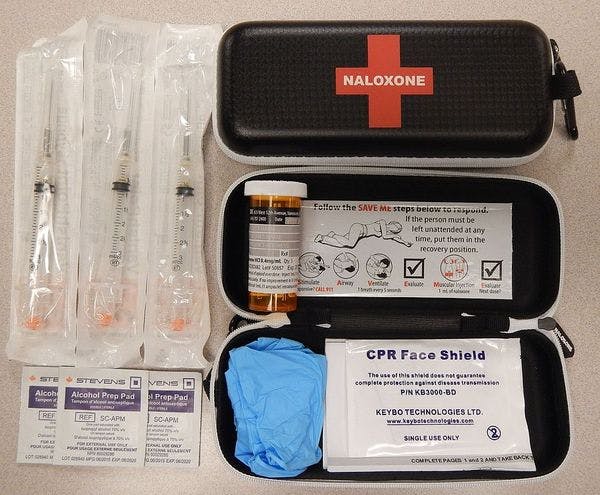Wikimedia Commons - James Heilman
Modelando el impacto combinado de intervenciones para evitar muertes durante una epidemia de sobredosis con opioides sintéticos en Canadá
Irvine et al. identificaron que los kits de naloxona para llevar a casa, espacios de consumo supervisado y la terapia con agonistas opiáceos han resultado efectivos para evitar muertes por sobredosis en Columbia Británica. Más información, en inglés, está disponible abajo.
By Michael A. Irvine, Margot Kuo, Jane A. Buxton, Robert Balshaw, Michael Otterstatter, Laura Macdougall, M‐J. Milloy, Aamir Bharmal, Bonnie Henry, Mark Tyndall, Daniel Coombs & Mark Gilbert
Abstract
Background and aims The province of British Columbia (BC) Canada has experienced a rapid increase in illicit drug overdoses and deaths during the last 4 years, with a provincial emergency declared in April 2016. These deaths have been driven primarily by the introduction of synthetic opioids into the illicit opioid supply. This study aimed to measure the combined impact of large‐scale opioid overdose interventions implemented in BC between April 2016 and December 2017 on the number of deaths averted. Design We expanded on the mathematical modelling methodology of our previous study to construct a Bayesian hierarchical latent Markov process model to estimate monthly overdose and overdose‐death risk, along with the impact of interventions. Setting and Cases Overdose events and overdose‐related deaths in BC from January 2012 to December 2017. Interventions The interventions considered were take‐home naloxone kits, overdose prevention/supervised consumption sites and opioid agonist therapy. Measurements Counterfactual simulations were performed with the fitted model to estimate the number of death events averted for each intervention and in combination. Findings Between April 2016 and December 2017, BC observed 2177 overdose deaths (77% fentanyl‐detected). During the same period, an estimated 3030 (2900–3240) death events were averted by all interventions combined. In isolation, 1580 (1480–1740) were averted by take‐home naloxone, 230 (160–350) by overdose prevention services and 590 (510–720) were averted by opioid agonist therapy. Conclusions A combined intervention approach has been effective in averting overdose deaths during British Columbia's opioid overdose crisis in the period since declaration of a public health emergency (April 2016–December 2017). However, the absolute numbers of overdose deaths have not changed.
